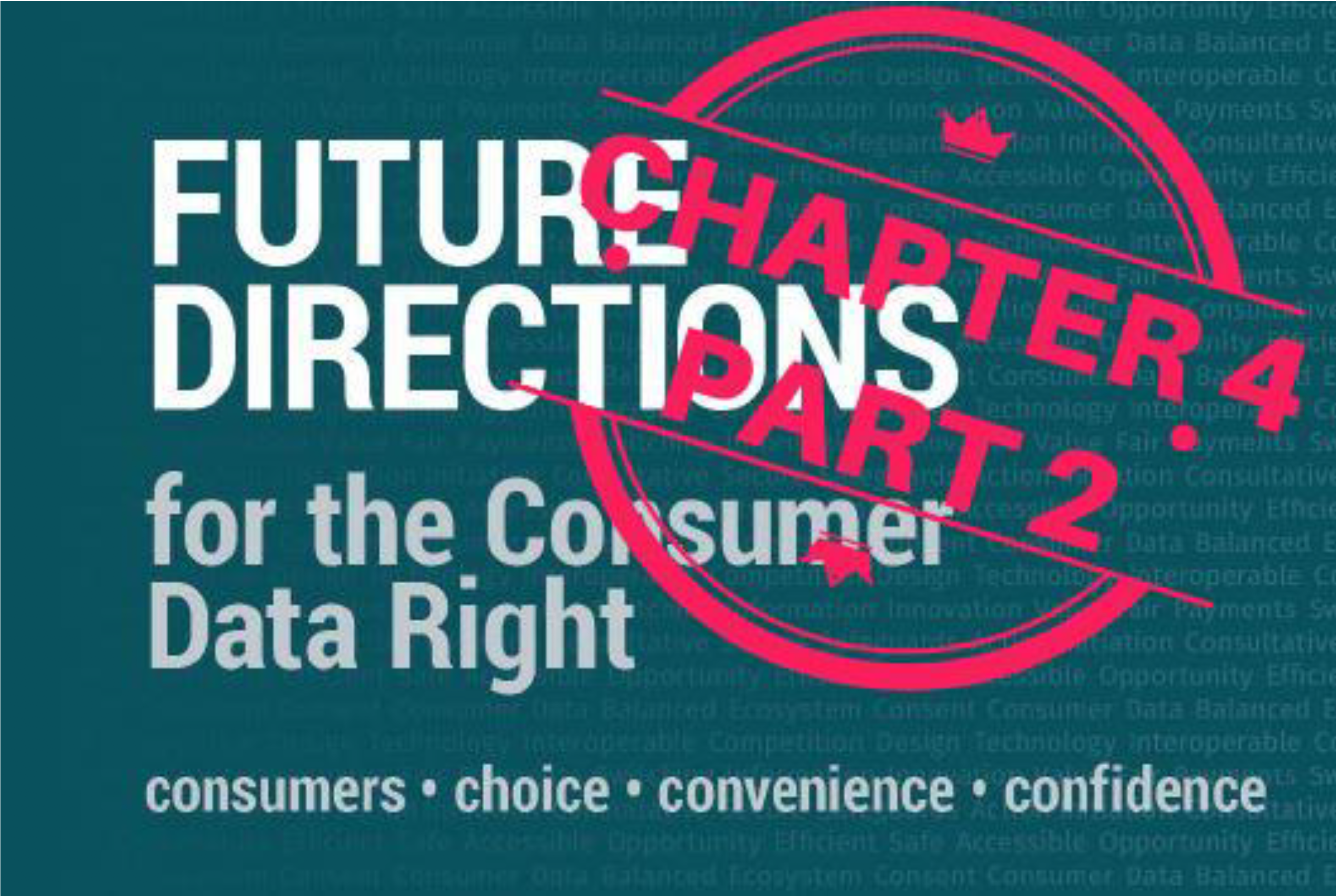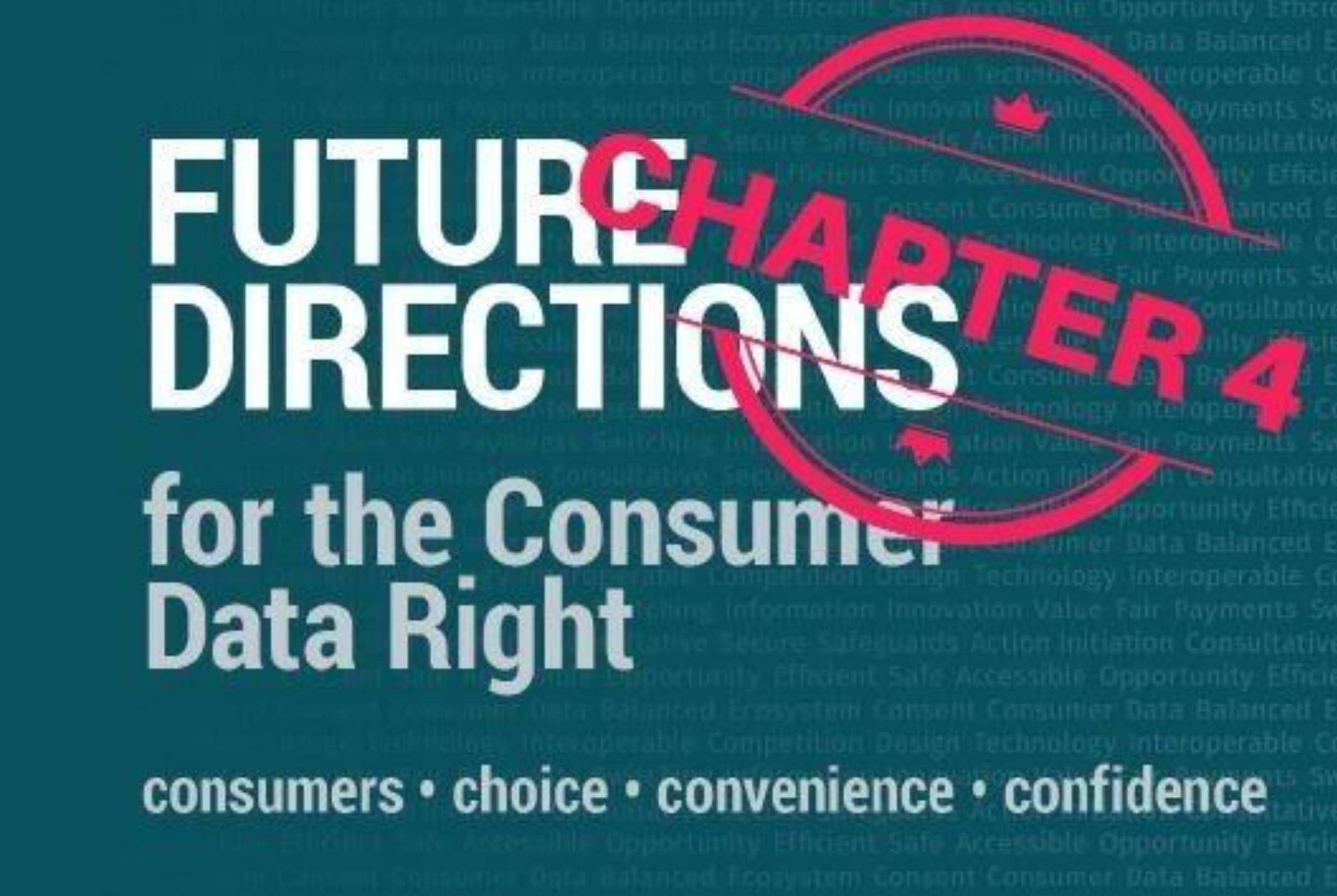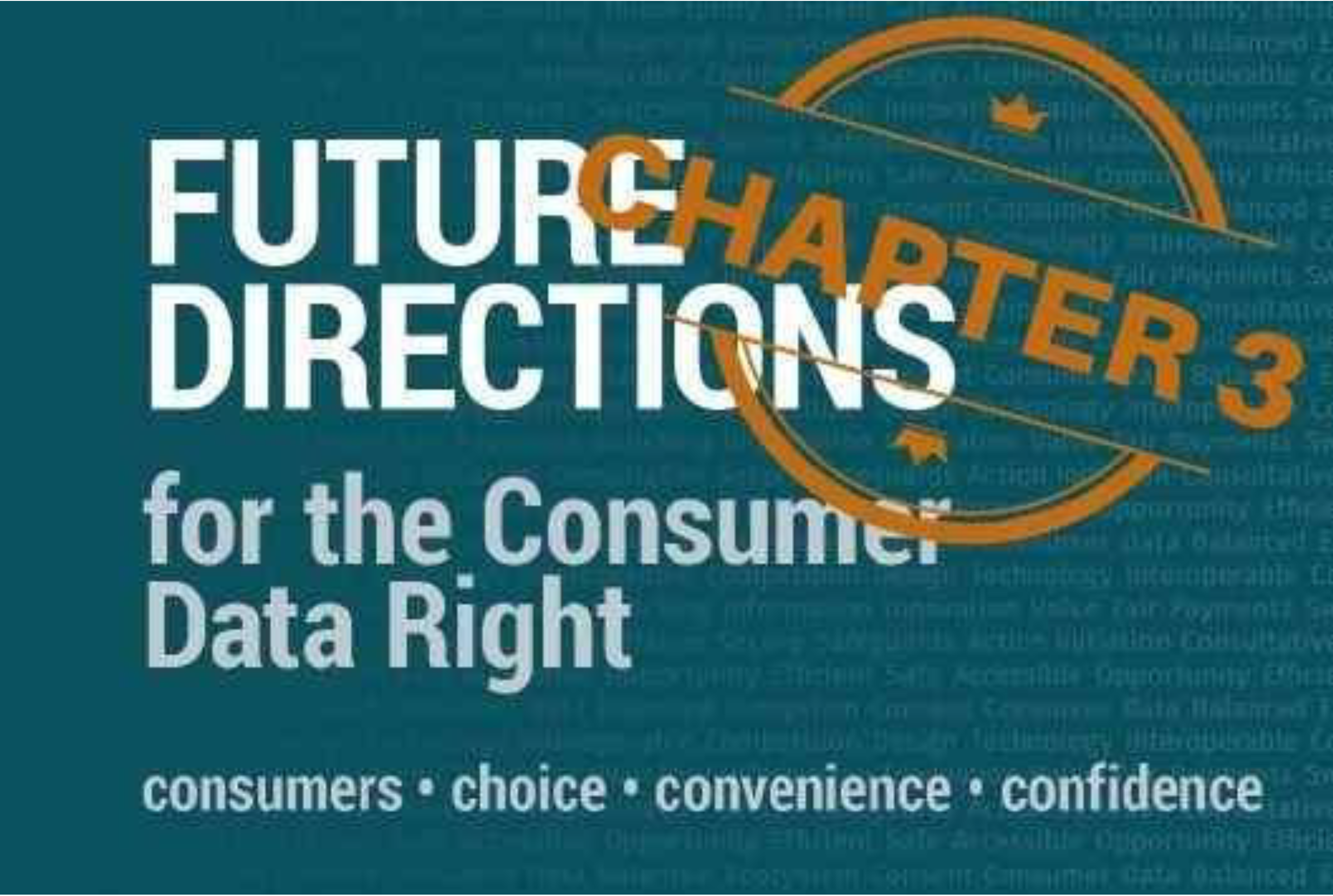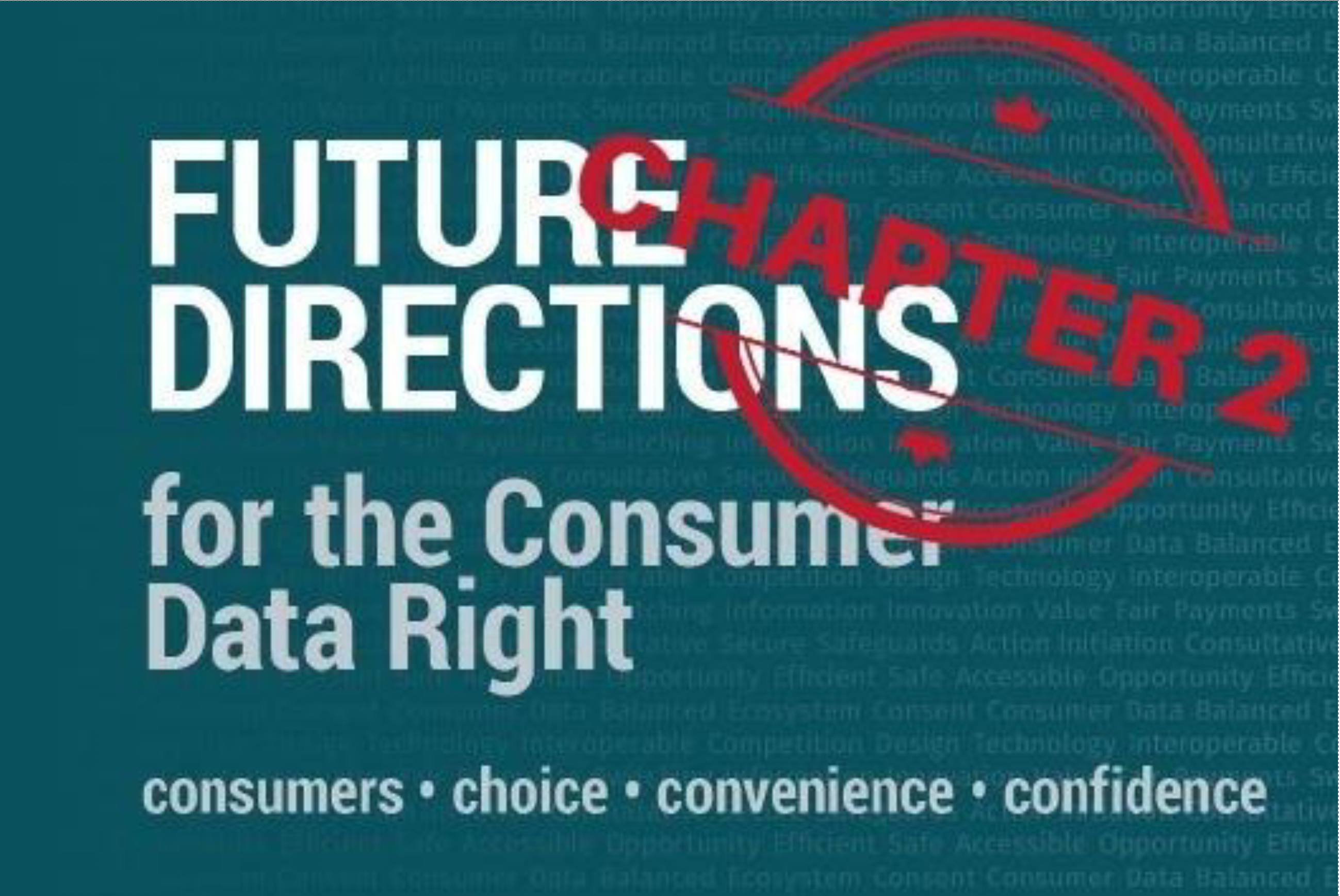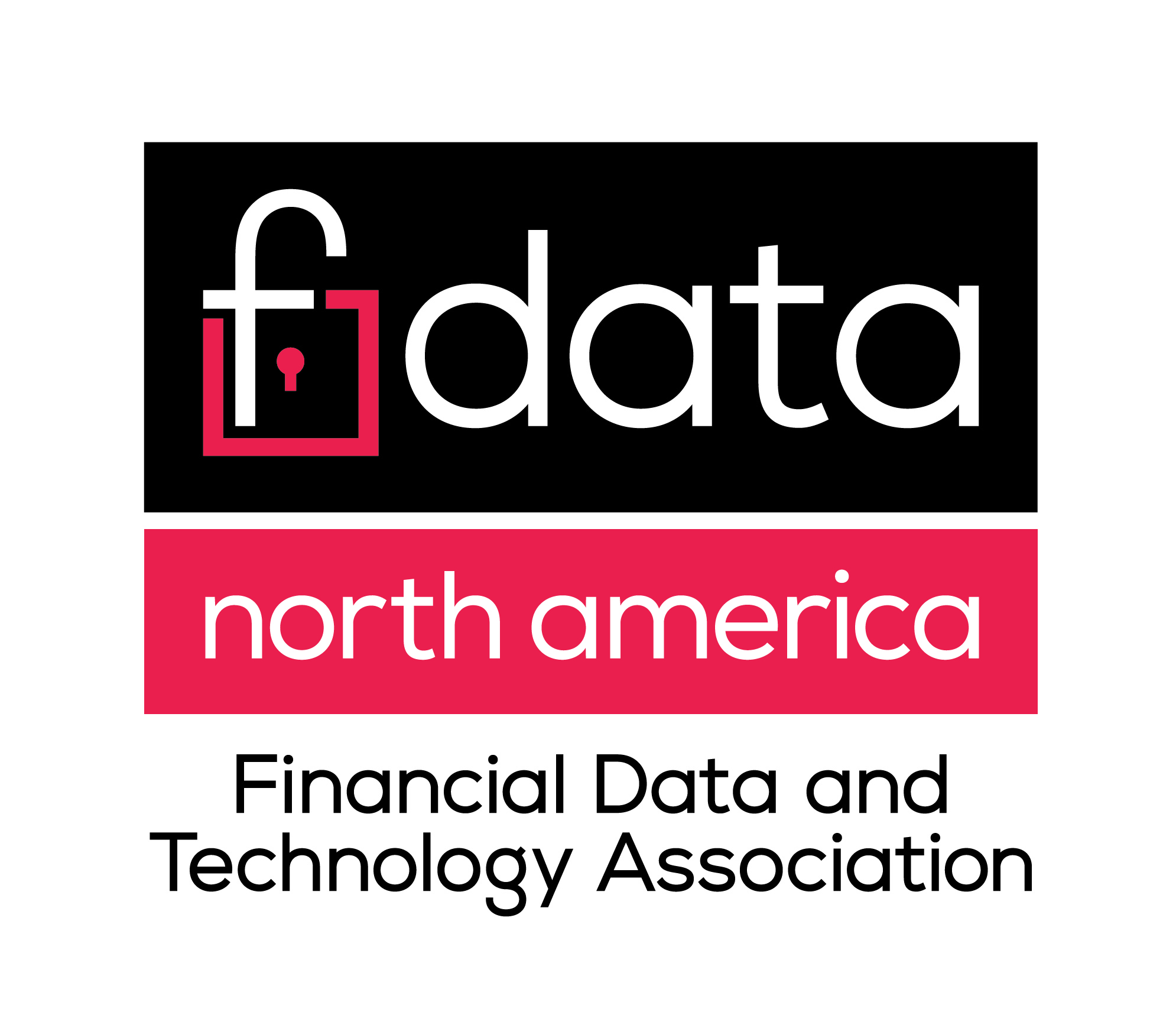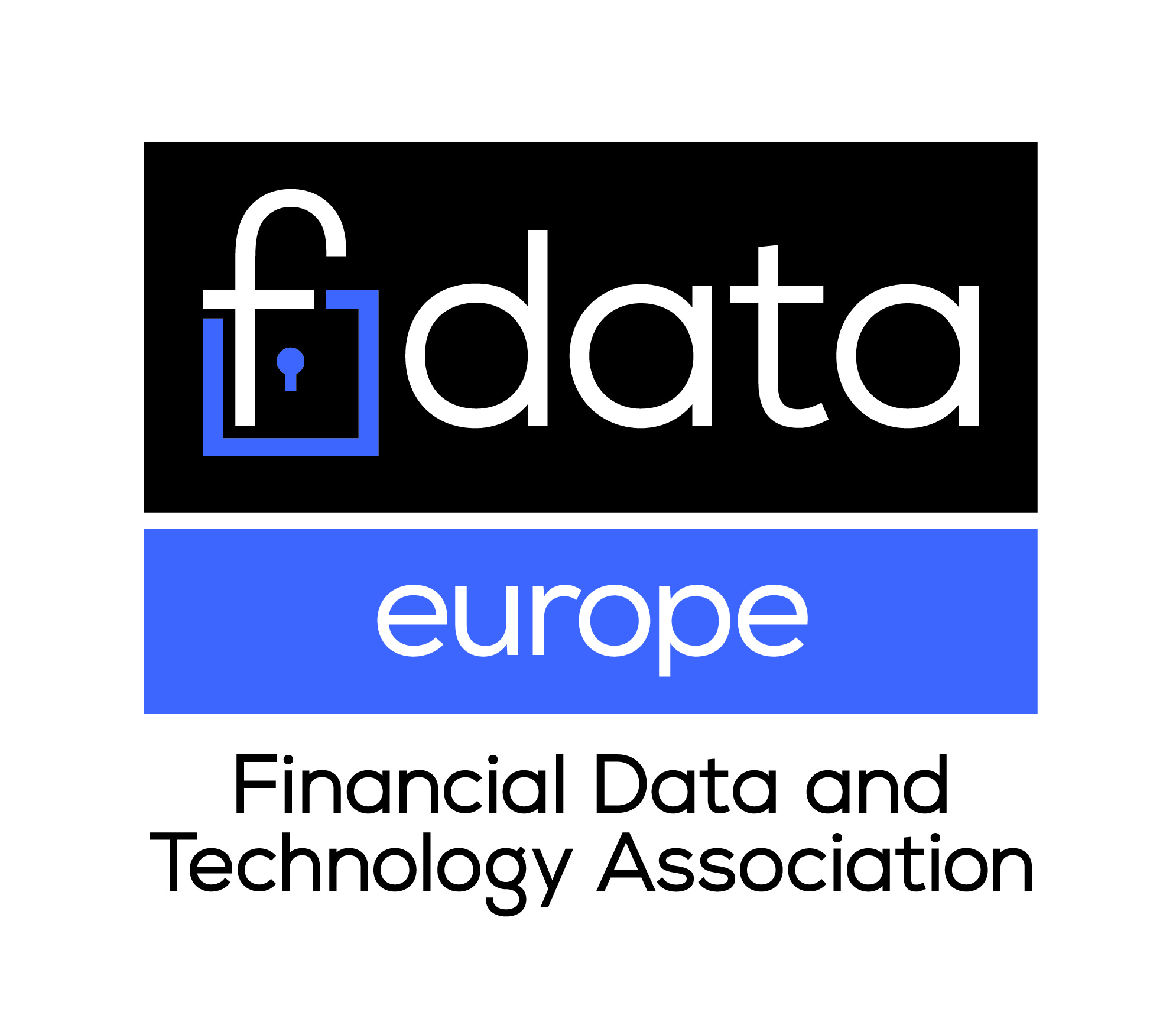A Breakdown of the Inquiry into Future Directions for the Consumer Data Right –
Final Report
Future Directions for the Consumer Data Right – Chapter 4
A Breakdown of the Inquiry into Future Directions for the Consumer Data Right –
Final Report
Future Directions for the Consumer Data Right – Chapter 3
A Breakdown of the Inquiry into Future Directions for the Consumer Data Right –
Final Report
Future Directions for the Consumer Data Right – Chapter 2
A Breakdown of the Inquiry into Future Directions for the Consumer Data Right –
Final Report
Future Directions – for the Consumer Data Right
A Breakdown of the Inquiry into Future
Directions for the Consumer Data Right –
Final Report
Member Spotlight: Intuit
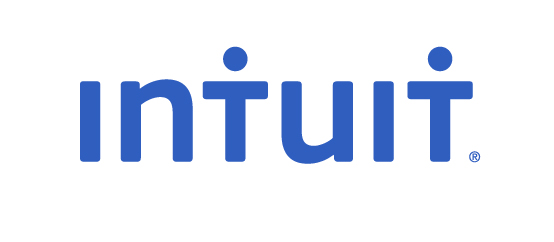
Intuit is a global technology platform that helps customers and communities overcome their most important financial challenges. Serving approximately 100 million customers worldwide with TurboTax, QuickBooks, Credit Karma and Mint, Intuit believes that everyone should have the opportunity to prosper and works tirelessly to find new, innovative ways to deliver on this belief.
Founded 38 years ago, the work Intuit does starts with a mission of powering prosperity around the world. Prosperity means something different for each person, but finances often sit at the core of living the life you want. Intuit believes that everyone should have access to the expertise, tools, and resources they need to take control of their financial life and pursue their dreams.
Across its platform, Intuit puts the power of technology and data on the side of customers by delivering simple, delightful solutions through their products:
- QuickBooks is the world’s largest small business platform, serving as the center for small business growth. QuickBooks has helped customers simplify the financial complexities of managing their business and achieve success for more than 25 years. QuickBooks began by helping small businesses manage their books and grew into a platform that helps them get paid fast, manage capital, and pay employees with confidence.
- TurboTax takes the complexity out of the tax code, helping people get the maximum refund they deserve.
- Mint is a free personal finance app that helps users to get a holistic view of their financial picture and make smart money decisions.
- Credit Karma is a data platform that helps people find the right financial products, putting more money in their pockets and providing insights and advice.
Intuit’s mission of powering prosperity also goes beyond its products. Intuit leverages its products, unique expertise, and scale to have a positive impact on communities around the world by investing in people and helping them meet the challenges they face. For example, to help struggling Canadian families and small businesses during the COVID-19 pandemic, Intuit launched its Prosperity Accelerator. The 5-month program encourages startups to leverage the power of AI to advance the financial prosperity of consumers and businesses in North America. Selected startups have access to a corporate and investor mentorship network, dedicated coaching, and the opportunity for follow-on investment from Highline Beta.
Additionally, Intuit QuickBooks leveraged its fintech experience to help customers access more than $1.2 billion in SBA-approved Paycheck Protection Program loans and keep thousands of employees on payroll in the United during the height of the COVID-19 pandemic. QuickBooks also launched a new platform for product-based businesses, offers on-demand accounting experts, and has helped to democratize machine learning by adding it to the company’s offerings for the benefit of small businesses.
Building on its commitment to help small businesses save time by simplifying complex business operations and taking the guesswork out of complicated compliance matters, Intuit QuickBooks Australia became the first accounting software firm in Australia to be accredited by the Data Recipient Accreditor at the unrestricted level and the third data recipient to be accredited overall in October 2020. The landmark accreditation gives Australians greater control over how their financial and banking data is accessed and used and allows them to securely share it with accredited third parties. In addition to saving users additional time – estimated at around eight to ten hours per week – as well as money and resources that are currently spent on financial management, the move allowed real time and simple cash flow management, with highly accurate future forecasting through richer insights.
Intuit is proud to join FDATA North America’s efforts to bring the benefits of opening banking to businesses in other geographies so that individuals and business owners can easily and securely access their banking data allowing them to spend their time focusing on what matters most to them.
FDATA Australasia
What is FData
The Financial Data and Technology Association is a not-for-profit global association for financial sector companies that use open finance in their business models. Our members provide innovative financial applications and services to empower customers to make better decisions and take fuller control of their financial lives across all their payment accounts, credit cards, loans, mortgages, investments, pensions and retail insurance. We seek to work with government, regulatory authorities and the financial services industry in our mission to enshrine the rights of customers to be able to share their financial data with regulated actors of their choosing.What do we do for the Financial Sector?
We lobby governments and regulators to release the benefits of open finance for the benefit of their consumers, and we represent the conceptual views of our members as well as becoming deeply involved in the specific, detailed and often technical implementation of open finance solutions. FDATA holds the market to account for doing open finance in a way that puts the needs of customers first, and removes complexity, risk and engineering cost where possible.
What are we doing in ANZ?
FDATA has played an active and successful role in ANZ, particularly in relation to the Consumer Data Right during its introduction of Open Banking. Our liaison with the ACCC, OAIC, DSB and Treasury, has seen us provide advisory works and recommendations around the customer experience, the global perspective and the role of Third Parties and Intermediaries within Open Banking. FDATA has also worked with the regulators in relation to the next layer of CDR, Open Energy, and will continue to lobby for a common-sense approach to remediating the existing framework.
In October 2020, FDATA convened and mediated a Roundtable between the Cloud Accounting Fraternity, the ACCC and the Treasury Department. The purpose of this roundtable was to provide direct and content-specific feedback to the Regulators in a timely fashion ahead of the Rules consultation deadline. The outcome of this meeting was additional actions to be taken by the Data Standards Body, the Treasury Department and the ACCC. This has since been repeated on two occasions with favourable outcomes for our members and the market alike.
Our services to our members include one-on-one consultations, collaborative All-member’s calls and events with special guests, i.e. Daniel McAuliffe, Paul Franklin, Scott Farrell and Industry Leaders in technology, the sharing of global perspectives, intelligence and reports, formal submissions on-behalf of member’s, access to industry experts and shared networks for progressing the greater conversations across all aspects of banking and finance. This includes access to global best-practice research from the Global Open Finance Centre of Excellence
Our works continue to support both our New Zealand members, but also the Ministry of Business, Innovation and Employment with their consideration of a CDR option for New Zealand, and the Department of Internal Affairs in their pursuit of a Digital Trust and Digital Identity Frameworks to promote an Economy Wide Data sharing framework with Industry and Consumer considered. FDATA is also contracted by the API Centre/API Council to design a roadmap for delivering an Economy-wide data-sharing framework.
Does FDATA focus on Open Banking only?
Whilst FDATA has initially focused on Open Banking, as advocates for economy-wide data-sharing FDATA has commenced working with the Energy sector and will continue to support each new sector of the CDR.What do you get for membership?
Each chapter of FDATA works tirelessly to reform and progress Data Portability within their own jurisdiction, but at the same time, adding to the global evolution of Digital Finance and Consumer Rights. By investing in FDATA you play an active role in improving delivery and shaping the future. Our work is 100% funded by member contributions. The membership fees are important to give FDATA members the bandwidth to tackle an increasingly complex array of challenges. FDATA members are often competitors who have signed up to the FDATA charter and recognise the importance of working collaboratively together to improve the quality of the marketplace, which is in their mutual interests.
Join us, and you can:
• drive the FDATA policy which we take directly to decision-makers;• enjoy direct access to decision-makers and influencers as part of FDATA ANZ delegations; receive forward intelligence on industry changes;• participate in regional working groups with like-minds and visionaries• have an opportunity to shape the industry’s future by creating FDATA ANZ blueprint & policy; access the global insights and network of FDATA’s reach;• collaborate and network with other key players in the sector at our member meetings.
Are there other FDATA Chapters?
We have chapters and representatives in:
• Australia/New Zealand, Australasia
• Europe
• United Kingdom
• North America
• South America
How do you become a member?
Just fill out the application form:https://fdata.global/membership-application-form/ and we’ll take it from there.
FDATA North America: White House EO Will Help Individuals, Families and Small Businesses Recovering From Pandemic
Contact: Kerrie Rushton, (202) 365-6338, krushton@allonadvocacy.com
July 9, 2021, Washington, DC – The Financial Data and Technology Association (FDATA) of North America today issued a statement following the release of President Joe Biden’s Executive Order on financial competition. In the order, the president directs the Consumer Financial Protection Bureau (CFPB) to issue a regulation that would allow bank customers to have access to, and share, their own financial data. FDATA North America Executive Director Steve Boms said:
“Today’s Executive Order represents a significant step forward for consumers and small business towards an open finance regime in the United States. Coming out of a pandemic and recession, a CFPB rule will improve financial inclusion, enhance customers’ access to affordable credit, and help families and businesses improve their financial wellbeing.
This order also will help create a customer-centric, 21st century financial services marketplace that boosts competition. Major markets around the world have implemented or are designing open finance regimes. U.S. consumers must not be left behind and, today, the White House is one step closer to making sure that they are not. FDATA North America and its members are eager to work with the CFPB and the Biden administration to implement this incredibly important regulation.”
ABOUT FDATA NORTH AMERICA
FDATA was heavily involved in the UK Open Banking Working Group in 2015. In 2016, the working group’s output was published by Her Majesty’s Treasury as the Open Banking Standard. FDATA North America was founded in early 2018. Its members collectively provide tens of millions of consumers in Canada, the United States and Mexico with aggregation-based tools to better manage their finances.
Members include: air (Alliance for Innovative Regulation), APImetrics, Betterment, BillGO, Codat, Direct ID, Envestnet Yodlee, EQ Bank, Experian, Fiserv, Flinks, Interac, Intuit, Inverite, Kabbage, Mogo, Morningstsar, M Science, MX, Petal, Plaid, Questrade, Quicken Loans, SaltEdge, Trustly, ValidiFI, VoPay, Wealthica, Xero, and others.
Open Letter to CMA re Future of OBIE – June2021 (2)
We, as leading financial technology companies and their representatives, are writing to you in advance of the CMA Board’s consideration of the future of the Open Banking Implementation Entity (OBIE).
We welcome the CMA’s recent review of the Open Banking Future Entity, however we have concerns about the process of reviewing UK Finance’s (UKF) proposal, and the future direction of the stewardship of open banking in the UK market. Our concerns are mirrored by the considerable number of stakeholders, TPPs, ecosystem players, and trade bodies that responded to the consultation expressing similar concerns:
Decision making in the hands of the large banks, the ability for those banks to exit the Future Entity, and lack of independent oversight for the entity creates undue risk to the future of open banking
The consultation is limited to only the UKF proposal, and has not given due consideration to approaches proposed by other stakeholders
There has been little transparency in the disclosure of alternative proposals submitted, and in the decision to consult on only one proposal.
Member Spotlight: Kabbage

In the wake of the Great Recession, Kathryn Petralia and Rob Frohwein launched Kabbage, a startup whose mission would be to use data-driven solutions to empower small businesses to grow with flexibility, efficiency, and prudence. Since then, Kabbage, which is now an American Express company, transformed itself from a funding startup for eBay sellers into a leading cash-flow management platform for all small businesses. Over half a million small businesses accessed more than $16 billion through Kabbage and, during the COVID-19 pandemic, it was the second largest Paycheck Protection Program (PPP) lender in the United States during the first round of PPP, approving nearly 300,000 applications.
By connecting real-time, existing third-party business data to Kabbage, small businesses can be approved for a line of credit between $1,000 to $150,000 in minutes. (Kabbage charges no origination fees, annual fees, monthly maintenance fees, or documentation fees for its small business loans.) It’s new online Kabbage Checking™ account comes with no monthly maintenance fees and small business customers receive a 1.10 annual percentage yield (APY) on balances up to $100,000. Kabbage Payments helps businesses send, process, and settle invoices quickly.
The company’s offerings have been particularly helpful for underserved entrepreneurs. As Kabbage noted in a February 2020 news release, a joint report penned by the Federal Reserve Bank of Atlanta and the Federal Reserve Bank of Cleveland found credit-worthy Black-owned small businesses are about 20 percent less likely than credit-worthy white-owned small businesses to receive approval for financing at both large and community banks. Even when approved for credit, minority-owned businesses are less likely to be approved for the amount they need. Kabbage and its automated underwriting platform improves financing experiences for underserved small businesses by only measuring their true business performance to make credit decisions, creating a blind application process.
With Kabbage, small businesses are approved by analyzing their real-time, and objective, business performance data, eliminating hurdles that may contribute to the struggles minority-owned firms face in traditional loan-application processes. Kabbage also offers data insights to arm entrepreneurs with knowledge to grow their companies. The firm’s Small Business Resource Center includes information on topics ranging from invoicing to competitor analysis to switching checking accounts.
Kabbage was acquired by American Express in 2020 to continue to expand American Express’s B2B offerings beyond their Card business with Kabbage’s broader set of cash flow management tools.
Kabbage co-founder Kathryn Petralia discussed the future of financial technology with Forbes in February 2021. Her comments sum up the benefits of a customer-directed finance system. Petralia said, “It all boils down to the user experience and consumers’ on-demand expectations. Banks are increasingly being commoditized. Fintechs will become the de facto face of money management, as they provide exceptional user experiences that remove friction points common with traditional banking. It shouldn’t take days or weeks to open a bank account, multiple days to settle funds, or months to be approved for a loan. Fintechs will make financial services more seamless and accessible for everyone.”

